Best Oil to Season Cast Iron: Top Choices for Perfect Cookware
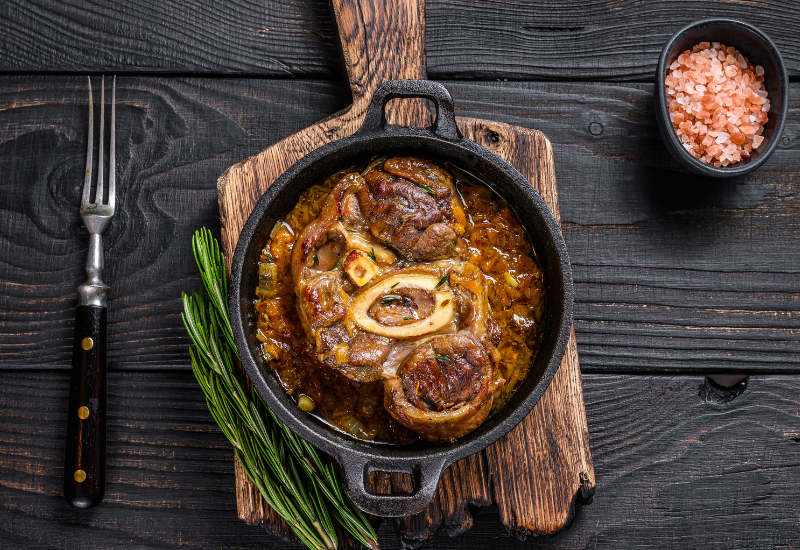
When it comes to seasoning your cast iron cookware, choosing the right oil can make all the difference. Just like you, many home cooks and professional chefs alike swear by the benefits of a well-seasoned cast iron skillet, including healthy non-stick cooking and incredible heat retention.
With so many oil options out there, it might be overwhelming to figure out which one works best for seasoning your cast iron. Fret not, as we’ve researched and selected some of the top choices for you. The ideal oil will have a high smoke point, be readily available, and affordable. Two popular options are grapeseed oil and Crisco solid shortening. Both these oils provide great results and make your cast iron cookware non-stick and ready to use for delicious meals.
In this article, we’ll explore some of the best oils for seasoning your cast iron skillet and guide you on how to season your cookware properly. Though it may seem like a daunting task now, with the right oil and a little practice, you’ll find that maintaining your cast iron becomes second nature. So, let’s dive in and discover which oil works best for you and your cookware!

Table of Contents
Factors to Consider When Choosing Oil
When choosing the best oil to use, there are a few key factors to keep in mind. This guide will walk you through the most important aspects to consider, including smoke point, flavor, and affordability.
Smoke Point
One important factor to consider is the smoke point of the oil. When an oil reaches its smoke point, it starts to break down and emit smoke. For seasoning cast iron, you’ll want to choose an oil with a high smoke point to ensure it can handle the high heat required for the seasoning process.
Examples of suitable oils include safflower, rice bran, soybean, peanut, corn, sunflower, and canola oil.
Flavor
The flavor of the oil is another aspect you should pay attention to. Avoid oils that may impart a strong or undesirable flavor onto your cookware. Neutral-flavored oils are ideal, as they won’t affect the taste of your food when you cook with your newly seasoned cast iron.
Canola oil, vegetable oil, and sunflower oil are some examples of oils with a neutral flavor, making them a good choice for seasoning cast iron.
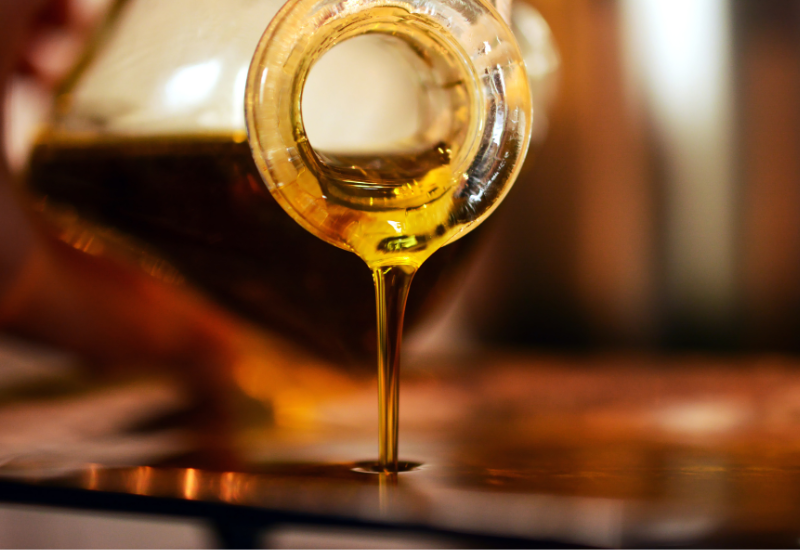
Best Oils for Seasoning Cast Iron
When it comes to seasoning your cast iron, the oil you choose can make all the difference. We’ll explore some of the best oils for this purpose, discussing their benefits and why they stand out among the rest. Let’s dive into these top contenders:
Vegetable Oil
Vegetable oil, a popular choice for seasoning cast iron, is affordable and easily accessible. With its blend of different oils, vegetable oil typically contains a mix of unsaturated fats, including both polyunsaturated and monounsaturated fats. These fats help create a durable and slick surface on your cast iron, perfect for cooking a variety of dishes.
Flaxseed Oil
Flaxseed oil, known for its concentration of unsaturated fats, takes your cast iron’s seasoning game to the next level. A powerful layer is formed as the oil bonds with the iron, leaving you with a non-stick, super slick cooking surface. Just keep in mind that flaxseed oil can be more expensive and harder to find compared to other options.
Grapeseed Oil
Another top choice, grapeseed oil is widely used by professional chefs and cast iron enthusiasts alike. With a high smoke point, this oil enables you to heat your pan quickly and establish a strong bond between the oil and iron surface. Grapeseed oil is also a good source of polyunsaturated fats, which contribute to its impressive seasoning qualities.
Canola Oil
Often chosen for its high smoke point and affordability, canola oil is another excellent choice to use when seasoning. Though high-quality canola oil may be a bit difficult to find, its blend of monounsaturated and polyunsaturated fats makes it a solid contender in creating the perfect seasoning for your beloved pan.
Peanut Oil
If you’re considering peanut oil, you’re on the right track! Its high concentration of monounsaturated fats makes it an effective oil to use. Peanut oil is also known for its high smoke point, adding another advantage to its seasoning capabilities. However, be mindful that peanut oil is not suitable for those with peanut allergies.
Avocado Oil
Last but certainly not least, avocado oil is a fantastic choice for seasoning due to its high concentration of monounsaturated fats and high smoke point. This oil creates an impressive layer on your cast iron, ensuring that it remains smooth and non-stick. Avocado oil can be more expensive compared to other oils, but the results may be worth the investment.
Common Oils and Should You Use Them
In this section, we’ll take a closer look at some of the most common oils and fats used for seasoning cast iron cookware. We’ll discuss their pros and cons and determine their suitability as a seasoning oil.
Olive Oil
Olive oil is a popular choice for cooking, but when it comes to seasoning cast iron, it might not be the best option. Its relatively low smoke point (around 350 degrees Fahrenheit) could lead to a sticky residue on your skillet after seasoning. However, if you don’t have any other oil on hand, you can still give it a try, just pay close attention to the seasoning process and the temperature.
Lard
Lard is a traditional choice for seasoning cast iron, particularly in the south. It’s an animal fat rendered from pork and has a high smoke point (around 370 degrees Fahrenheit), making it an excellent choice for seasoning. Its unique flavor can also add a touch of deliciousness to your cast iron cooking. Just remember to store it properly in a cool, dry place to avoid spoilage.
Shortening
Shortening is another popular option for seasoning cast iron – it’s essentially hydrogenated vegetable oil. It has a very high smoke point (around 450 degrees Fahrenheit) and is easy to apply evenly across your cookware’s surface. Many people find that using shortening results in a smooth, even seasoning without any sticky residue. If you decide to use shortening, make sure to choose one without any added flavors or ingredients.
Animal Fat
Similar to lard, other animal fats like tallow, suet, or duck fat can also be used for seasoning your cast iron cookware. These fats have high smoke points and add a rich, savory flavor to your dishes. Just note that they may not be suitable for vegetarian or vegan diets, and proper storage is crucial to prevent spoilage.
Bacon
Bacon is not only delicious, but the rendered fat can also be used for seasoning your cast iron. Save the bacon grease after cooking a batch and store it in a clean, airtight container. Bacon grease with a smoke point around 400 degrees Fahrenheit imparts a delightful smoky flavor to your cast iron. Just be aware that it may produce a slightly uneven seasoning compared to other oils or fats.
Seasoning Process
Seasoning your cast iron involves a few crucial steps to maintain its performance and longevity. In this section, we’ll go through the process, from cleaning it to applying oil and baking it in the oven.
Cleaning the Cast Iron
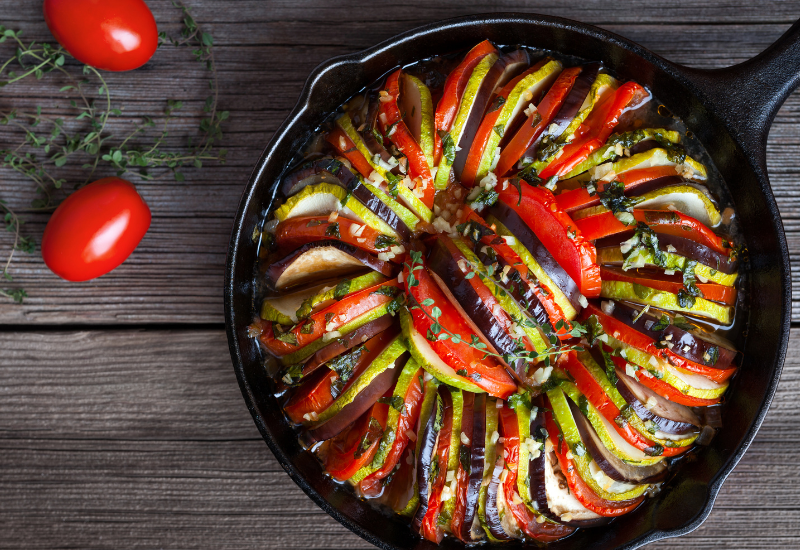
Before seasoning, it’s essential to ensure that your cast iron pan or skillet is properly cleaned. If it’s brand new, remove any packaging labels or stickers. If it’s an older piece, make sure to clean off any rust or food particles. To clean your cast iron, use warm water and a non-abrasive scrubber. Avoid using soap, as it can strip the pan’s natural seasoning. Once your cookware is clean, thoroughly dry it with a towel to prevent rusting. If necessary, you can heat the dry cast iron on the stovetop for a few minutes to evaporate any remaining water.
Applying the Oil
After cleaning, apply a thin coat of oil to the entire surface of your cast iron, inside and out. You can use a paper towel or a clean kitchen towel to spread the oil evenly. Be sure to remove any excess oil to avoid pooling or sticky residue.
Recommended Oils:
- Vegetable Oil
- Canola Oil
- Grapeseed Oil
Baking in the Oven
Once you’ve applied the oil, it’s time to bake your cast iron in the oven to form a protective layer. Preheat your oven to 400°F (204°C). Place your pan, skillet, or Dutch oven upside down on the middle oven rack, with a baking sheet or aluminum foil on the rack below to catch any drips. Bake your cast iron for one hour, then carefully remove it from the oven using oven mitts, as it will be hot.
Allow it to cool for at least 30 minutes, or until it’s safe to handle. Once cooled, you’re ready to use your seasoned cast iron cookware! Remember, the more you cook with your cast iron, the better its seasoning will become. So, don’t hesitate to put it to good use in your kitchen adventures!
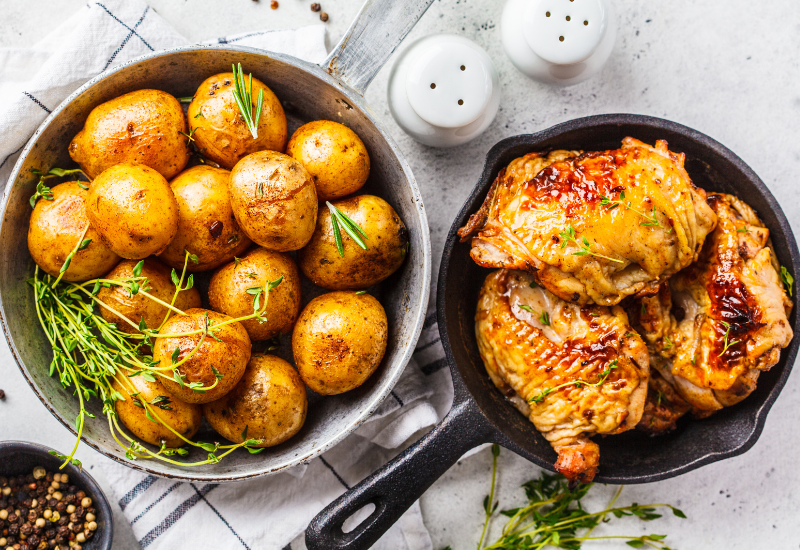
Cooking and Maintenance Tips
Having the best oil for seasoning your cast iron skillet is crucial, but there are other factors that contribute to its maintenance and cooking performance. In this section, we’ll go over some essential tips for cooking with it and keeping it in excellent condition.
Using the Right Utensils
Opt for wooden, silicone, or nylon utensils to avoid scratching the surface of your skillet. This will help maintain the integrity of your cast iron’s seasoning and preserve its smooth cooking surface.
Avoiding Acidic Foods
Acidic foods, such as tomatoes and vinegar-based sauces, can potentially strip the seasoning from your cast iron skillet. When preparing dishes with acidic ingredients, it’s best to use alternative cookware like stainless steel or enamel-coated pots and pans to preserve the seasoning on your cast iron.
Frying and Cooking Techniques
Frying is a popular cooking technique with cast iron because it’s ideal for maintaining even heat and creating a crispy surface on foods like fried chicken. When frying, use oils with a high smoke point, such as canola or vegetable oil, to prevent unpleasant flavors and protect the seasoning from breaking down. Don’t overcrowd the skillet to ensure even cooking and heat distribution.
Aside from frying, cast iron is also suitable for baking and roasting. The skillet’s heat retention makes it perfect for baking cornbread, cakes, and even pizza. It’s good to experiment with different cooking techniques to get the most out of your cast iron skillet.
Re-seasoning When Necessary
Your cast iron skillet may require occasional re-seasoning to maintain its non-stick surface and prevent rust. If you notice dull or patchy areas on the cooking surface, simply clean the skillet, dry it thoroughly, and apply a thin layer of oil. Place the skillet upside down in an oven preheated to 400°F and bake for an hour, then let it cool. This process helps to maintain and enhance the seasoning on your skillet, ensuring it performs well and lasts a lifetime.
Popular Cast Iron Brands
When it comes to cast iron cookware, one brand that consistently stands out is Lodge. They’ve been around for over a century and their products are known for their durability, even heat distribution, and versatility. Lodge offers a variety of pieces, including skillets, griddles, and dutch ovens, making it easy for you to find the perfect addition to your kitchen.
Another great aspect of Lodge’s products is that they comes pre-seasoned, so you don’t have to worry about this initial step. They use a high-quality vegetable oil for seasoning, ensuring a good nonstick surface right from the start. But, remember that you’ll still need to maintain the seasoning by using the right oils over time, nurturing the nonstick properties along the way.
When using a Lodge pan, you will appreciate its versatility as it’s perfect for various cooking techniques, like searing, frying, baking, and more. Whether you want to whip up a delicious stir-fry, bake a fluffy cornbread, or slow cook a comforting stew, your Lodge cookware can handle it all.
Now, let’s take a quick look at some popular Lodge cast iron products. This list will help you decide which one might suit your needs best:
- Cast Iron Skillet: A staple in any kitchen, available in various sizes.
- Double Play Reversible Grill/Griddle: A two-in-one piece that’s perfect for grilling and pancakes.
- 5-Quart Cast Iron Dutch Oven: Ideal for slow-cooking and baking.
So there you have it! Lodge offers a multitude of high-quality cast iron products that will make a wonderful addition to your cookware collection. With proper seasoning and care, your Lodge cast iron pieces will become even more nonstick, reliable, and versatile over the years, sharing countless delicious meals with you and your loved ones.
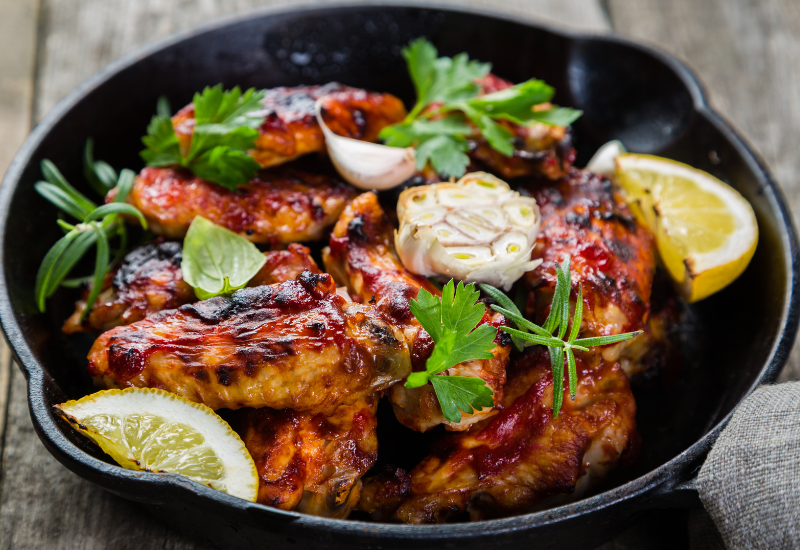
What Exactly Is Cast Iron Seasoning?
The process of seasoning your cast iron cookware is essential to maintain its performance and longevity. But what exactly is cast iron seasoning? Let’s explore the key components of this process and why it’s important for the longevity and performance of your piece(s).
Polymerization
When cast iron seasoning oil is heated, it undergoes a chemical reaction known as polymerization. This reaction causes the oil to break down and bond to the surface of the cookware, creating a hard and slick black patina. The black patina is essential for maintaining the performance of the cookware and protecting it from rust.
Nonstick Surface
One of the main benefits of seasoning your cast iron cookware is that it creates a natural nonstick surface. This means that you can cook with less oil and your food won’t stick to the cookware, making it easier to clean. The nonstick surface is created through the polymerization of the seasoning oil, as mentioned earlier. The more you cook with your pan, the better the nonstick surface becomes, enhancing the performance of your cast iron cookware over time.
Preventing Rust
Cast iron is susceptible to rust without proper maintenance. Seasoning creates a protective barrier that prevents rust by forming a patina on the surface. This patina not only provides a nonstick surface but also seals the cookware, keeping moisture at bay. Regular seasoning with suitable oil is imperative to maintain the quality of your cookware and prevent rust.
Now that you understand the significance of seasoning, it’s time to select the best oil for your cast iron. There are many oils to choose from, such as avocado or canola. Choose the one that best fits your needs, and your cookware will remain in top shape for years to come.
10 FAQs
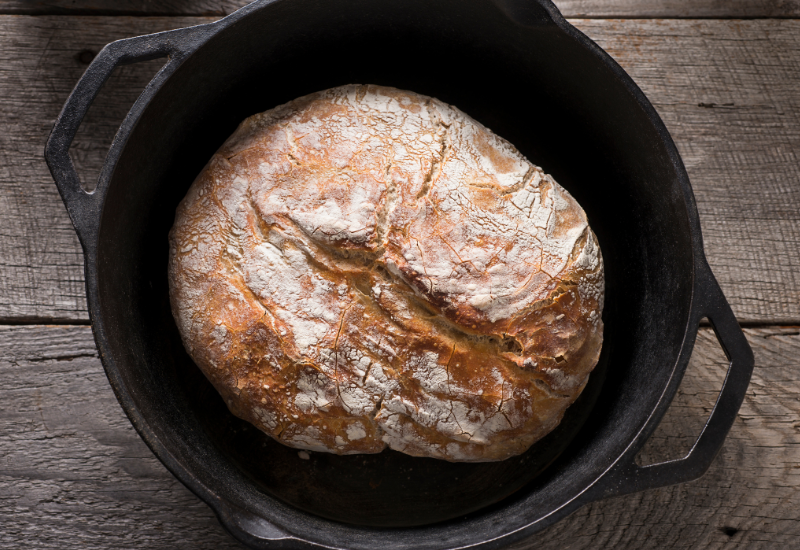
Wondering about the best oil for seasoning your cast iron? Below you’ll find some frequently asked questions and their answers, to help guide you in your cast iron care.
- What is the best oil for seasoning cast iron?
While many oils can work well, avocado oil is considered one of the best options for seasoning cast iron due to its high smoke point and neutral flavor. Refined avocado oil, which has a smoke point between 500-520 degrees. - Can I use vegetable oil on cast iron?
Yes, vegetable oil is also a good option. It’s good to use a neutral oil like canola or vegetable oil for seasoning your cast iron skillet. - Is olive oil suitable for seasoning cast iron?
Olive oil can be used, but it’s not the top choice due to its lower smoke point. It also has a great flavor, aroma, and numerous health benefits. - Does the type of oil matter for seasoning?
Smoke point and flavor are the main factors to consider when choosing an oil. Neutral oils with a high smoke point are the best choices, such as avocado, canola, or vegetable oil. - How often should I season my cast iron?
It depends on usage, but seasoning your cast iron once a month is a good rule of thumb. Regular maintenance keeps your pan in great condition. - Is it important to clean my cast iron after each use?
Yes! Cleaning is essential to ensure food particles don’t build up and damage the seasoning. Remember to dry it thoroughly afterward! - Can I use soap on my cast iron?
Generally, it’s better to avoid using soap as it can strip the seasoning. However, if you must, use a mild, natural soap sparingly and rinse well. - How do I remove stubborn stuck-on food from my cast iron?
Use a combination of kosher salt and a bit of water to scrub the stuck-on debris. Rinse and dry the pan thoroughly after cleaning. - Can I cook acidic foods in my cast iron?
It’s best to avoid cooking acidic foods like tomato sauce in your cast iron, as it can break down the seasoning and cause the surface to become rough over time. - What is the advantage of using cast iron cookware?
Cast iron provides even heat distribution, excellent heat retention, and a naturally non-stick surface when seasoned properly. Plus, it’s durable and can last generations!
Now you’re more familiar with the essential care for your cast iron cookware, ensuring your skillet will be a kitchen staple for years to come. Happy cooking!







Comments are closed.